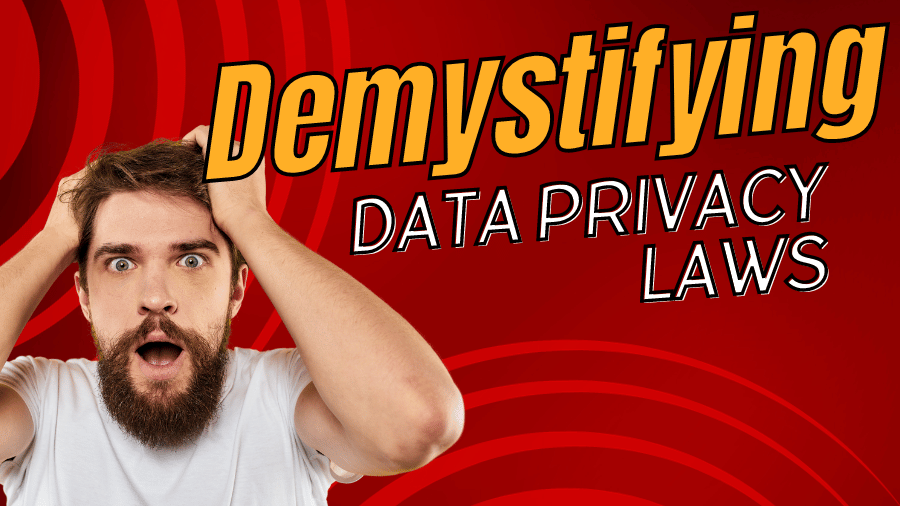Understanding FERPA, CIPA, Other K–12 Student Data Privacy Laws
Protecting student data is paramount in today’s ever-evolving education landscape. With the increasing reliance on technology and cloud-based solutions in K–12 schools, understanding the intricacies of student data privacy laws is crucial. In this article, we’ll delve into the key aspects of laws like FERPA, CIPA, and NY State Ed-Law 2-D to shed light on how they affect school districts, cloud data, and the potential liabilities faced by IT leaders.
FERPA: Safeguarding Student Information
What is FERPA?
FERPA, the Family Educational Rights and Privacy Act, is a federal law designed to protect the privacy of student education records. It grants parents and eligible students (those over 18) the right to access, review, and request changes to their education records. FERPA also mandates that schools obtain written consent before disclosing personally identifiable information (PII) from student records.
The Impact on Cloud Data
In today’s digitally-driven educational landscape, schools frequently rely on cloud-based solutions to manage student information. It’s vital to note that FERPA applies to cloud service providers (CSPs) if they have access to student records. School districts must choose CSPs that adhere to FERPA requirements and sign contracts that include appropriate data protection provisions.
Potential Liability for IT Leaders
FERPA holds educational institutions responsible for safeguarding student data, but it’s not just school districts that can be held liable. IT leaders must ensure that the technologies used comply with FERPA and that data breaches are promptly addressed. Negligence in selecting or managing CSPs can result in legal consequences.
CIPA: Protecting Students Online
What is CIPA?
The Children’s Internet Protection Act (CIPA) is a federal law that requires K–12 schools and libraries to implement internet filtering and safety measures to protect students from inappropriate online content. Schools that receive E-Rate funding must comply with CIPA.
The Impact on Cloud Data
While CIPA primarily focuses on internet safety, it indirectly influences the use of cloud-based tools in schools. Many cloud services have built-in content filtering and safety features that can assist schools in meeting CIPA requirements. IT leaders should collaborate with educators to select tools that align with CIPA standards.
Potential Liability for IT Leaders
IT leaders play a pivotal role in ensuring that online safety measures are in place and monitored. Failure to do so can not only jeopardize federal funding but also expose IT leaders to legal repercussions if students are exposed to harmful content due to inadequate filtering or safety measures.
NY State Ed-Law 2-D: A Local Perspective
What is NY State Ed-Law 2-D?
New York State Education Law Section 2-D is a state-level regulation addressing student data privacy. It outlines requirements for educational agencies and their vendors when it comes to collecting, storing, and using student data.
The Impact on Cloud Data
NY State Ed-Law 2-D places specific obligations on both school districts and vendors. Vendors that provide cloud services to New York schools must adhere to strict data security and privacy standards. School districts must perform due diligence when selecting vendors and ensure compliance with 2-D.
Potential Liability for IT Leaders
IT leaders in New York schools need to be well-versed in the intricacies of Ed-Law 2-D to avoid potential legal issues. Failure to comply can lead to fines and damage to a school district’s reputation.
What Happens if a School Breaches One of These Laws
A breach of FERPA, CIPA and other compliance mandates can have severe consequences. Schools in violation risk losing funding and may face lawsuits from affected individuals. Breaches can also result in damage to a school’s reputation, making it challenging to regain trust.
How to Reduce the Risk of Security Breaches in K–12 Schools
- Conduct Regular Audits: Regularly review data security practices and update them to address emerging threats.
- Training and Awareness: Train staff and students about data security and the importance of safe online practices.
- Vendor Selection: Choose cloud service providers and vendors with a strong commitment to data privacy and security.
- Data Encryption: Encrypt sensitive data both in transit and at rest to prevent unauthorized access.
- Incident Response Plan: Develop a robust incident response plan to handle data breaches promptly and effectively.
- Compliance Monitoring: Continuously monitor and ensure compliance with relevant student data privacy laws.
In conclusion, navigating the complex landscape of student data privacy laws in K–12 education requires diligence and expertise. IT leaders must work closely with educators, legal experts, and vendors to ensure compliance and protect both student data and their institutions’ reputations. By understanding FERPA, CIPA, and other regulatory compliance laws such as NY State Ed-Law 2-D, and implementing best practices, schools can create a safer and more secure digital learning environment for their students.

